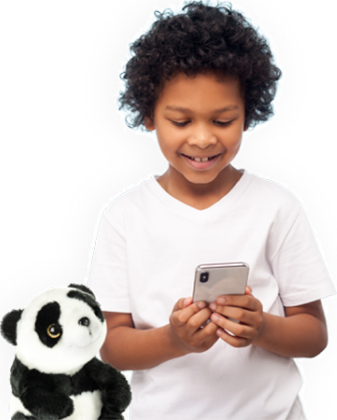Plastraining
Plastetraining is used with children who have difficulty potty training during the day. For example, for children who are already going to school, it is very difficult if they still wet their underwear during the day. Children can be very direct. A comment from another child can sometimes be very hurtful and cause a lot of grief. Sometimes teachers do not change the underwear themselves and you as a parent are asked to come and change your child's underwear at school. If you and your child seek help at a peeing clinic, for example, they are often offered potty training. With potty training, parent and child train together to become potty trained.
Plastraining
Pee training is designed to teach your child to respond properly to urges. So your child learns to listen to the signals of the bladder and learns to go to the toilet on time. It learns to recognize the signals of a full bladder during the day so that it does not go to the toilet too early and thus does small pee very often, but also not too late so that accidents follow. So your child learns during urine training:
- How your child should pee;
- When your child needs to pee;
- How often your child needs to pee;
How to pee?
It is important to get the following things right when doing urine training:
- Your child's posture on the toilet should be good. Your child's feet should be flat on the floor. Should your child's feet not be able to reach the floor, it is advised to use an ottoman. You can also use a toilet seat reducer for a good posture.
- Your child should have a relaxed posture. It should lean completely on the toilet seat. It is best to sit with legs spread and hands on knees
- Your child must take his or her time well. The pee must come at once. Your child should not push while urinating and the abdomen should be flabby. This is easier if your child blows out while urinating
- Your child should sit for a while after peeing, about half a minute
When to pee?
With urine training, your child learns to listen to the signals of the bladder and to go to the toilet on time. So your child must pay close attention to those signals and must learn to feel and decide for himself when to go to the toilet. It must learn the difference between an empty and a full bladder. Sometimes it is helpful to remind your child that he is training. You can do this by agreeing on a code word with your child. When this word is mentioned, your child knows that he/she has to think for a moment, feel it and then decide for himself/herself whether to go to the toilet.
How often do you need to pee?
Pee training teaches your child to go to the toilet about seven times a day. Twice in the morning, three times in the afternoon and about twice in the evening. So, if your child pees more than seven times, he or she is going to learn to pee less. With urine training, the bladder will be trained to do this. To practice properly, you also need to drink enough. Your child should drink about t to 1.5 liters of fluid a day.
Bedwetting
Once potty training is successfully completed, your child is potty-trained during the day. Some children are not yet potty trained at night. Then a bedwetting alarm can help. The bedwetting alarm teaches children to recognize the signal of a full bladder even at night and thus to go to the toilet on time. 93% of children are potty-trained at night within six to eight weeks when using a bedwetting alarm. The Dryly bedwetting alarm is unique:
- Wizzu the panda bear is your child's buddy during potty training. He gives your child the confidence that he/she can do it.
- The Dryly bedwetting alarm app alerts you when your child has an accident, keeps a record of accidents and includes a game to motivate your child during training.
Order the Dryly bedwetting alarm now.
